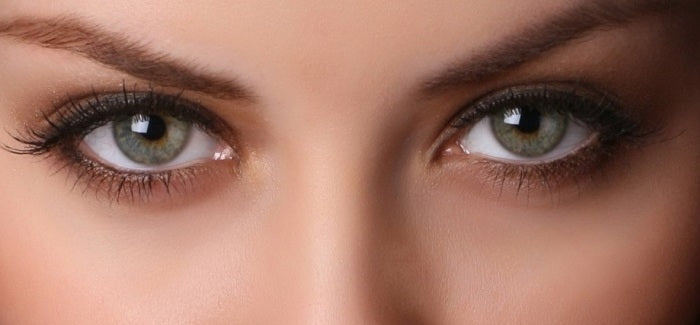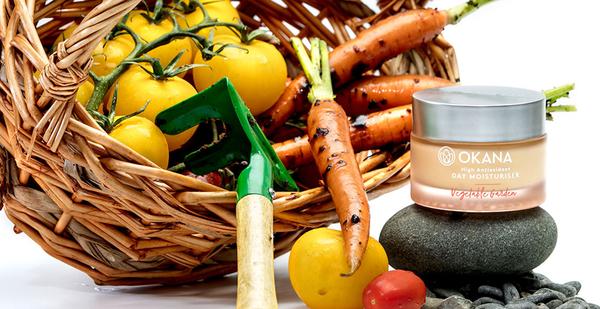
Has your skin type changed? Audit your face now!
 There are oodles of products in the market designed to reduce oiliness, provide rich moisture, reduce sensitivity or stop breakouts. Many of them do a great job, but if you’re buying something for oily skin when your skin is actually dry, don’t expect miracles. For great results and ongoing youthfulness, you need to label your skin correctly.
There are oodles of products in the market designed to reduce oiliness, provide rich moisture, reduce sensitivity or stop breakouts. Many of them do a great job, but if you’re buying something for oily skin when your skin is actually dry, don’t expect miracles. For great results and ongoing youthfulness, you need to label your skin correctly.
Your skin type doesn’t stay the same throughout your life. To audit your skin and get an up-to-date result, here’s the process: Wash your face, don’t apply any products, wait two hours and see what’s going on.
- - Dry or sensitive skin will be tight, rough, red and perhaps flaky in places
- - Oily skin will have visible greasiness and a bit of shine
- - Combination skin will have oil in the T- zone, as well as dryness in places like the cheeks
- - Normal skin will be smooth, with no excess shine or dry spots.
Once you have reality staring you in the face, evaluate your current skincare programme accordingly. Here are our recommendations for each skin type.
How to cope with oily skin
To keep itself healthy, skin creates sebum, which is a natural oil. It’s perfectly pH balanced to keep your skin slightly acidic and it’s important for retaining moisture. But excess oiliness happens when the skin goes into overdrive, resulting in breakouts and a slightly greasy appearance. This is made worse if the facial pores are large; the bigger the pore, the more active the oil production is.
If you have oily skin, breakouts will always be a probability. You’ll be prone to an oily film on your face and it will be hard to find a sunscreen that doesn’t feel heavy and sticky.
The great news about oily skin is that it means you’ve got a fantastic built-in moisturising system, are less prone to wrinkles and your skin barrier is probably quite healthy. As you age, your skin tends to dry out and produce less oil, so if you had oily skin as a teen, you might find it’s different in your 40s.
Your main objectives will be to keep your skin clean and fresh looking, minimise oil production, reduce visible pores, and lessen breakouts and acne.
Wash: It might be tempting to try to clean all that oil away and leave your skin feeling squeaky clean. However, the opposite is true: removing all the oil makes your skin produce even more oil. Instead, try the Korean method of double-cleansing, using an oil cleanser first (like attracts like) and a foaming cleanser for the second clean. This removes all makeup, sweat and grime without drying out your skin and stimulating excess oil production. Start with Okana’s Mango and Apricot Cleanser (more here) and follow up with our Apple Juice Foaming Cleanser (more here).
Moisturise: Just because your skin is prone to oiliness doesn’t mean you can skip moisturisation. Under that oil, your skin still needs hydrating. Avoid heavy, rich creams and try using a product with a lightweight or gel formula. This will help your skin to retain water without leaving a greasy layer on top.
Treatment: Because your skin is robust, you can lightly exfoliate or do a skin treatment a few times a week. Use a gentle exfoliator or try a home-made facial using yoghurt, papaya or finely-ground oats.
How to look after dry skin
The biggest giveaway that you have dry skin is dullness. This is because dry skin has a top layer of desiccated, dead skin cells, which make the skin look lifeless. The dry skin could be due to sun damage, over-exfoliation, damage to the skin barrier, using too-hot water in the shower or hormonal changes due to age.
To bring life back into your complexion, handle your skin with care. This means gently removing the dead skin cells, and providing intensive moisture and nourishment to the skin underneath. Dry skin can’t be left to look after itself, because it contributes to premature aging, wrinkles and fine lines.
Wash: Use an oil-based or cream cleanser. Most foaming cleansers deplete moisture and leave your skin like the Sahara - parched and lifeless. Only wash with tepid water, as hot water dries the skin out.
Moisturise: Dry skin can do with a lot of extra help in this area, so use specific rich moisturising creams for day and night. For your night-time fix of moisture, try Okana’s Berry Blend Night Moisturiser (more here), which is packed with nutrients and uses apricot kernel oil for an extra moisture boost.
See our guide to 'The best moisturiser for dry skin here'.
Treatment: A gentle exfoliator once a week might be all you need to slough off that layer of dead skin. Because your skin is dry, you could consider a fruit enzyme treatment that gently removes old skin without drying, scratching or damaging your dry skin. Or keep it simple with our Bamboo Bead Face Scrub (more here) – it gently removes that build-up of dead skin cells and the bamboo is rich in minerals.
How to care for sensitive skin
You’ll know if you have sensitive skin. It’s prone to inflammation and damage, is easily irritated and stings a bit when you wash it. Sometimes, for no apparent reason, it may react wildly to a product, even one you’ve used before with no problems. Having sensitive skin is a nervous nightmare – you’re always reading ingredient lists and your bathroom cupboard will be full of products you’ve given up on.
Some products should be avoided completely. Isopropyl myristate, alcohol-based toners, fragranced products, sulfates and chemical barrier sunscreens can all be very problematic for sensitive skin. You should also minimise wine, cocktails and stress, which can trigger skin sensitivity.
The good news is that sensitive skin may be transitory, because it’s often due to skin barrier damage or a certain stage in your life.
See 'How to choose the best natural face cleanser for your skin type (here).
Wash: Just like dry skin, avoid foaming cleaners and opt for cream or oil-based cleaners. Apply gently, avoid using hot water and dry your skin by patting it with a clean towel, not scrubbing.
Moisturise: You need a product that helps to restore balance and heal the skin barrier. Try to find a natural, simple product that’s non-reactive, healing, and super gentle. Products that contain avocado, rosehip and jojoba oil are an excellent start. As your skin heals, you can try to incorporate new products.
Treatment: While you want to give your skin TLC, you mustn’t aggravate it further. Try a very gentle exfoliation once a week. Finely ground oats mixed with honey makes a soothing, anti-inflammatory scrub and could be a weekly treatment. Focus on providing nourishment and healing.
How to deal with combination skin
If you have zones of oiliness and dryness or your skin seems to get dry in winter but is fine in summer, then you might have combination skin. Juggling two different skin types in one face is perfectly normal, but it might take some extra management. For instance, many people with combination skin have an oily t-zone, with excessive oil on the nose and forehead.
Cleansers: You could be in for a bit of trial and error here, as you try to find a cleanser that works for your whole face. We think you should lean towards an oil or cream cleanser, to keep dry areas supple and calm.
Moisturise: Try using different products for different parts of your skin. Use a lighter moisturiser for oily areas and a richer moisturiser for dry areas. Adapting to the needs of combination skin means a certain amount of experimentation. Also consider applying a toner between cleansing and moisturisation. Okana’s Cucumber and Lettuce Toner (more here) is cooling, balancing, delivers moisture and won’t irritate your dry skin zones.
Treatment: This is your chance to give dry skin some extra moisture and to help clear the pores in the oily areas. A gentle exfoliation once or twice a week is a good start and a once-a-week face mask will help to keep the spots away from oily areas.
How to keep normal skin fabulously normal
If your skin doesn’t have any obvious problems - it’s not dry, flaky, oily or prone to acne - then you have the holy grail - normal skin. This skin type is well-hydrated, healthy, maintains an even level of sebum production and doesn’t require specialised care.
The biggest challenge with normal skin is keeping it normal. Diet, ageing and your environment can affect your skin, so a good routine is crucial for keeping your skin in top form.
Cleanser: You don’t want to strip your skin of natural oils, but you still want to effectively remove all traces of the day. K-beauty routines recommend double-cleansing at night, which involves using an oil-based cleanser followed by a foaming cleanser. Doubling up on cleanser removes all traces of makeup, including eyeliner, and means your skin is clear and ready for bed.
Moisturise: While normal skin isn’t too needy, you still need to keep it healthy and balanced. Try switching to our Vegetable Garden Day Moisturiser (more here). It features macadamia oil for that lush skin feel, plus lots of nutrients to make your skin glow.
Treatment: Consider using a gentle manual exfoliator two or three times a week. A moisturising face mask once a week will also help to keep your skin looking clear, lush and fresh.
Advice for all skin types - always wear sunscreen
Regardless of your skin type, you need to wear sunscreen every day. Try to choose a physical barrier, such as a zinc or titanium-based cream, rather than a chemical-based one. Avoid products like oxybenzone and octinoxate, as they damage the environment and are toxic to coral reefs and marine life. Sunscreen is important to avoid damage from UV rays, which hasten the arrival of wrinkles and increase the risk of skin cancer.
See our Radiant Skincare Box Set
Simplify your daily skin ritual and transform your skin with the entire Okana facial care range.




Leave a comment
This site is protected by hCaptcha and the hCaptcha Privacy Policy and Terms of Service apply.